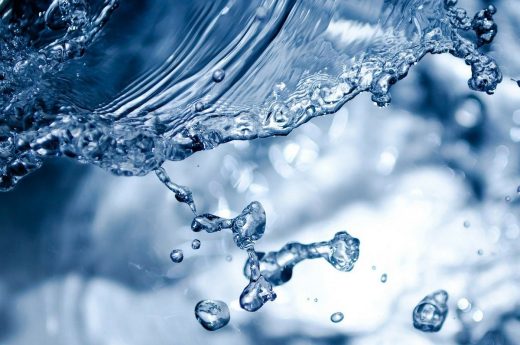How to remineralize reverse osmosis water advice, Filtration technology tips, Online property guide
How to Remineralize Reverse Osmosis Water
27 Jan 2022
Do you know that reverse osmosis is currently the most advanced water filtration technology? It removes almost every contaminant from the water, including chemicals, sediment, microorganisms and heavy metals.
And although RO systems get rid of contaminants from your water, they also remove essential minerals like calcium and magnesium.
Drinking demineralized water can harm your metabolism and the intestinal mucous membrane if taken for a long time. You can also suffer from delirium or hyponatremic shock.
To prevent these risks, you need to remineralize RO water and make it the best for drinking. To learn about how to remineralize reverse osmosis water, continue reading.
Why is it Important to Remineralize RO Water?
- Important for Human Health
Remineralizing RO water enables you to regain the lost essential minerals while still ensuring that your water is free of impurities and contaminants.
The major micronutrients in mineral-rich water include magnesium, calcium and trace minerals.
Calcium plays a vital role in strengthening your bones and teeth, and magnesium activates enzymatic reactions.
Sodium and potassium help the nerves to function properly and muscles to contract. Insufficient quantities of all these minerals lead to poor health.
- Encourage Hydration
Mineral water is better tasting and quenches thirst effectively than pure water. On the other hand, RO water tastes flat because of its neutral pH level.
And since remineralized water tastes better, you’ll find your loved ones taking more water than before. The water is also perfect for making coffee, tea or for cooking.
- Improved Water Flavor
Ask any water drinker, and they might distinguish the taste of RO water. It’s unpleasant and tastes bland, the reason why most people hate to drink it.
Remineralized water, on the other hand, tastes much better.
How to Remineralize RO Water
With the unhealthy side effects of RO water, you need to remineralize the water. Listed below are 5 methods to remineralize the water:
- Adding a Mineral filter to your reverse osmosis system
- Adding mineral salt: Himalayan salt
- Using an alkaline water pitcher
- Adding green powder
- Adding trace mineral drops
Adding a Mineral Filter to an RO System
One of the easiest ways to remineralize RO water is to get a mineral filter for your RO system. In fact, most RO systems come with the remineralization filter in place already.
The filter reintroduces the beneficial minerals back into your water, making it tasty and healthy.
And although installing a mineral filter or purchasing an RO system with the filter is the most expensive option, it’s the most convenient and effective.
Adding Mineral Salt
Adding mineral salt to RO water is also a highly effective method. In fact, it’s also one of the most cost-effective RO water remineralization methods.
Using natural salt like the Himalayan pink salt instead of common table salt will give you the necessary trace minerals removed during the RO process.
For the best results, add a pinch of the salt to a gallon of RO water. You can stir to dissolve or leave it to sit for a while.
Although tempting, never add table salt to the water as it contains sodium. Too much sodium in your drinking water is unhealthy.
Use an Alkaline Water Pitcher
An alkaline water pitcher has a filter that restores essential minerals to your drinking water. The pitcher changes the pH level of the water as well.
Alkaline water pitchers have a filter cartridge that adds minerals back into your water. They are affordably priced but require replacement every 3 months.
Adding Green Powder
If you prefer minerals from plants, adding green powders or green blends will do for you. The green powder contains a mixture of vegetables and fruits that provide you with minerals and other nutrients.
You can purchase the green powder in a tin and add it directly to your food, drinking water or tea.
The powder can consist of beets, cabbage, brussel sprouts, carrots, cabbage, kale, broccoli, seaweed or spinach. It can also have grasses like wheatgrass, alfalfa, barley and fruits like goji, raspberries, blueberries and acai berries.
You can also add the green powder to your soups salads or take it as a supplement.
Adding Trace Mineral Drops
If looking for the cheapest method for remineralizing your water, you can’t go wrong with trace mineral drops.
Also referred to as electrolyte blends, the mineral drops contain mineral concentrates. An important note to keep in mind is that some are better than others.
It’s therefore very important to get the trace mineral drops from an established manufacturer.
Depending on the product, you can either add the drops into your glass of water or a large pitcher.
Frequently Asked Questions
- What minerals does reverse osmosis remove from water?
Some of the minerals removed by reverse osmosis include calcium, iron, magnesium, fluoride, lead, zinc, among others.
- Is it safe to drink RO water daily?
No, according to WHO, low mineral drinking water produced by reverse osmosis is unsuitable for long-term human consumption. It can create adverse effects on everyone consuming it.
- How does a reverse osmosis system remove minerals?
Reverse osmosis membranes have tiny pores (0.0001 microns) that trap tiny contaminants, including minerals.
- Should I add minerals to RO water for an aquarium?
Yes, RO water is too pure to use in an aquarium and therefore needs some essential minerals added.
- What is the pH of reverse osmosis water?
The pH of reverse osmosis water is in the range of 5 to 7.
- Does reverse osmosis remove alkalinity?
Yes, reverse osmosis can remove up to 98% of dissolved minerals, significantly reducing the alkalinity of your water.
- Can you remineralize distilled water?
Yes, you can remineralize distilled water at home by adding pink Himalayan salt or trace mineral drops.
How to remineralize reverse osmosis water Conclusion
Although reverse osmosis water is pure, it lacks essential nutrients as they are removed together with the harmful contaminants during the filtration process.
And since you need to drink water with adequate minerals to stay healthy, you have to remineralize your RO water. This way, you can always enjoy pure, healthy and tasty water at all times.
References
https://www.sciencedirect.com/science/article/pii/S0043135418307061
https://dwellingexpertise.com/ro-with-remineralization/
Comments on this guide to how to remineralize reverse osmosis water article are welcome.
Water / Floods Articles
Water / Floods Posts
Finding the best water treatment experts
Water damage from leaks: construction lawsuits
Building Articles
Residential Architecture
Comments / photos for the How to remineralize reverse osmosis water advice page welcome


